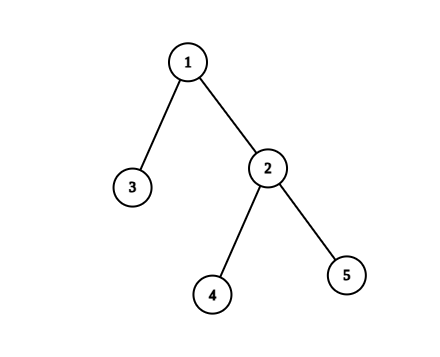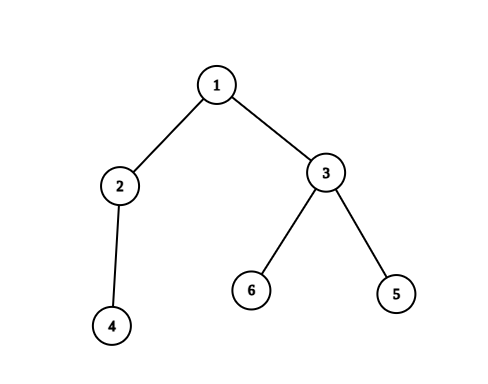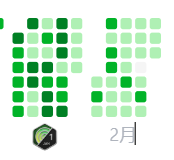之前是出去旅游了没发,现在开学了,继续每日一题,继续卷,一上来就是困难题😓,直接cv大法。
LeetCode
统计树中的合法路径数目
2867. 统计树中的合法路径数目 - 力扣(LeetCode)
题目描述
给你一棵 n 个节点的无向树,节点编号为 1 到 n 。给你一个整数 n 和一个长度为 n - 1 的二维整数数组 edges ,其中 edges[i] = [ui, vi] 表示节点 ui 和 vi 在树中有一条边。
请你返回树中的 合法路径数目 。
如果在节点 a 到节点 b 之间 恰好有一个 节点的编号是质数,那么我们称路径 (a, b) 是 合法的 。
注意:
- 路径
(a, b)指的是一条从节点a开始到节点b结束的一个节点序列,序列中的节点 互不相同 ,且相邻节点之间在树上有一条边。 - 路径
(a, b)和路径(b, a)视为 同一条 路径,且只计入答案 一次 。
示例 1:

输入:n = 5, edges = [[1,2],[1,3],[2,4],[2,5]]
输出:4
解释:恰好有一个质数编号的节点路径有:
- (1, 2) 因为路径 1 到 2 只包含一个质数 2 。
- (1, 3) 因为路径 1 到 3 只包含一个质数 3 。
- (1, 4) 因为路径 1 到 4 只包含一个质数 2 。
- (2, 4) 因为路径 2 到 4 只包含一个质数 2 。
只有 4 条合法路径。
示例 2:

输入:n = 6, edges = [[1,2],[1,3],[2,4],[3,5],[3,6]]
输出:6
解释:恰好有一个质数编号的节点路径有:
- (1, 2) 因为路径 1 到 2 只包含一个质数 2 。
- (1, 3) 因为路径 1 到 3 只包含一个质数 3 。
- (1, 4) 因为路径 1 到 4 只包含一个质数 2 。
- (1, 6) 因为路径 1 到 6 只包含一个质数 3 。
- (2, 4) 因为路径 2 到 4 只包含一个质数 2 。
- (3, 6) 因为路径 3 到 6 只包含一个质数 3 。
只有 6 条合法路径。
提示:
1 <= n <= 105edges.length == n - 1edges[i].length == 21 <= ui, vi <= n- 输入保证
edges形成一棵合法的树。
思路
困难题,cv大法
灵神题解
2867. 统计树中的合法路径数目 - 力扣(LeetCode)
代码
C++
const int MX = 1e5;
bool np[MX + 1]; // 质数=false 非质数=true
int init = []() {np[1] = true;for (int i = 2; i * i <= MX; i++) {if (!np[i]) {for (int j = i * i; j <= MX; j += i) {np[j] = true;}}}return 0;
}();class Solution {
public:long long countPaths(int n, vector<vector<int>> &edges) {vector<vector<int>> g(n + 1);for (auto &e: edges) {int x = e[0], y = e[1];g[x].push_back(y);g[y].push_back(x);}vector<int> size(n + 1);vector<int> nodes;function<void(int, int)> dfs = [&](int x, int fa) {nodes.push_back(x);for (int y: g[x]) {if (y != fa && np[y]) {dfs(y, x);}}};long long ans = 0;for (int x = 1; x <= n; x++) {if (np[x]) continue; // 跳过非质数int sum = 0;for (int y: g[x]) { // 质数 x 把这棵树分成了若干个连通块if (!np[y]) continue;if (size[y] == 0) { // 尚未计算过nodes.clear();dfs(y, -1); // 遍历 y 所在连通块,在不经过质数的前提下,统计有多少个非质数for (int z: nodes) {size[z] = nodes.size();}}// 这 size[y] 个非质数与之前遍历到的 sum 个非质数,两两之间的路径只包含质数 xans += (long long) size[y] * sum;sum += size[y];}ans += sum; // 从 x 出发的路径}return ans;}
};
Java
class Solution {private final static int MX = (int) 1e5;private final static boolean[] np = new boolean[MX + 1]; // 质数=false 非质数=truestatic {np[1] = true;for (int i = 2; i * i <= MX; i++) {if (!np[i]) {for (int j = i * i; j <= MX; j += i) {np[j] = true;}}}}public long countPaths(int n, int[][] edges) {List<Integer>[] g = new ArrayList[n + 1];Arrays.setAll(g, e -> new ArrayList<>());for (var e : edges) {int x = e[0], y = e[1];g[x].add(y);g[y].add(x);}long ans = 0;int[] size = new int[n + 1];var nodes = new ArrayList<Integer>();for (int x = 1; x <= n; x++) {if (np[x]) { // 跳过非质数continue;}int sum = 0;for (int y : g[x]) { // 质数 x 把这棵树分成了若干个连通块if (!np[y]) {continue;}if (size[y] == 0) { // 尚未计算过nodes.clear();dfs(y, -1, g, nodes); // 遍历 y 所在连通块,在不经过质数的前提下,统计有多少个非质数for (int z : nodes) {size[z] = nodes.size();}}// 这 size[y] 个非质数与之前遍历到的 sum 个非质数,两两之间的路径只包含质数 xans += (long) size[y] * sum;sum += size[y];}ans += sum; // 从 x 出发的路径}return ans;}private void dfs(int x, int fa, List<Integer>[] g, List<Integer> nodes) {nodes.add(x);for (int y : g[x]) {if (y != fa && np[y]) {dfs(y, x, g, nodes);}}}
}







:集合、Order By、Limit、TopN)


![[unity]lua热更新——个人复习笔记【侵删/有不足之处欢迎斧正】](http://pic.xiahunao.cn/[unity]lua热更新——个人复习笔记【侵删/有不足之处欢迎斧正】)



)






